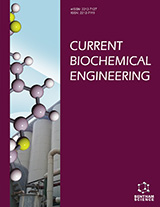Abstract
Background: “Health is wealth” and to maintain it 7 essential nutrients are required. Among these, Vitamin is one that has great importance in very low concentration. As per the solubility, it divides into water-soluble and water-insoluble vitamins. This study concentrates on Vitamin C, a water-soluble vitamin which is essential for human growth due to its activity in the synthesis of carnitine, collagen, and neurotransmitter. It possesses antioxidant, antiatherogenic, and immunomodulatory functions, which may lead to the activity of Vitamin C in many diseases. But humans and some other non-human primates are unable to produce Vitamin C from glucose due to the absence of enzyme gulonolactone oxidase. As a result, humans are dependent on various dietary sources of Vc especially citrus fruit. But these dietary supplies also fail to achieve the required level in the body due to its poor bioavailability and storage.
Methods: Vitamin C has already proven its activity in cancer therapy. It is also used as a prodrug of H2O2. But due to the poor bioavailability and storage of Vitamin C in the human body, mankind is unable to avail the benefits of Vitamin C. These problems lead to generating different and suitable nanoformulations to incorporate Vitamin C and its derivatives into it. Different research work shows several ways to develop nanoformulations. Amongst all liposomes, microsphere, nanocarriers are of great importance. For Vitamin C incorporation into the nanoformulation, nanocarriers become the most popular choice for researchers. There were several nanocarrier systems developed using Chitosan- Alginate, Silica-Coated-Au Nanoparticles, Chitosan, Mesoporous-silica NCs for suitable incorporation of Vitamin C into these. The performances were assured by performing different in vitro and in vivo tests which will be discussed here.
Result: As a result, Vitamin C is now in use for many purposes. It includes not only the above mentioned functions but also other functions too. Due to an antioxidant property, Vitamin C is able to quench reactive oxygen species (ROS) by inhibiting ROS-mediated Nitric Oxide (NO) inactivation. Vitamin C helps to elevate the level of absorption of iron within the cell from dietary iron sources. It also prevents the oxidation of drugs. To achieve all these functions, NCs or nanoformulation plays a great role.
Conclusion: It can be concluded that depending on the biocompatibility, loading capacity, protection of the loading molecule, efficiency of cellular uptake, controllable rate of release to achieve the desired effect, and many more factors, the choice of different Nanocarriers (NCs) will be done which ultimately help the human to use it for different purposes. This paper tries to gather some information in one place with respect to different experimental studies.
Keywords: Vitamin C (Vc), Nanocarriers (NCs), Nanoparticles (NPs), chitosan, anti-oxidant, controlled release.
Graphical Abstract
[PMID: 22728050]
[http://dx.doi.org/10.1016/0009-2797(74)90019-2] [PMID: 4430016]
[http://dx.doi.org/10.1073/pnas.73.10.3685]
[http://dx.doi.org/10.1073/pnas.0506390102]
[http://dx.doi.org/10.1016/j.jcin.2009.10.025] [PMID: 20170881]
[http://dx.doi.org/10.1161/01.CIR.97.22.2222] [PMID: 9631871]
[http://dx.doi.org/10.1093/jn/132.6.1299] [PMID: 12042450]
[http://dx.doi.org/10.1146/annurev.nu.01.070181.001011] [PMID: 6764713]
[http://dx.doi.org/10.1007/978-1-4613-0325-1_2] [PMID: 8821967]
[PMID: 8175804]
[http://dx.doi.org/10.1186/1475-2891-2-7] [PMID: 14498993]
[http://dx.doi.org/10.1179/135100001101535978] [PMID: 11333117]
[http://dx.doi.org/10.1248/bpb.29.766] [PMID: 16595915]
[http://dx.doi.org/10.1016/S0927-7757(99)00465-3]
[http://dx.doi.org/10.1021/jf9801973]
[http://dx.doi.org/10.1016/0009-2797(94)90033-7] [PMID: 8194129]
[http://dx.doi.org/10.1111/j.1742-4658.2006.05607.x] [PMID: 17222174]
[http://dx.doi.org/10.1111/odi.12446] [PMID: 26808119]
[http://dx.doi.org/10.1007/s00726-007-0555-7] [PMID: 17541511]
[PMID: 26640374]
[http://dx.doi.org/10.1016/j.ejps.2012.12.006] [PMID: 23262059]
[http://dx.doi.org/10.3390/polym3031377] [PMID: 22577513]
[http://dx.doi.org/10.5772/64516]
[http://dx.doi.org/10.2217/nnm-2017-0306] [PMID: 29565220]
[http://dx.doi.org/10.2147/IJN.S136629] [PMID: 28932118]
[http://dx.doi.org/10.2174/1389450118666170414113926] [PMID: 28413980]
[http://dx.doi.org/10.3109/21691401.2015.1129617] [PMID: 26758815]
[http://dx.doi.org/10.1016/S0378-5173(97)00135-X]
[http://dx.doi.org/10.1186/1556-276X-8-102] [PMID: 23432972]
[http://dx.doi.org/10.2174/1389200216666150812122128] [PMID: 26264206]
[http://dx.doi.org/ 10.3109/03639045.2012.719906] [PMID: 23013140]
[http://dx.doi.org/10.2174/156720111796642327] [PMID: 21696349]
[http://dx.doi.org/10.5567/pharmacologia.2012.371.376]
[http://dx.doi.org/10.2174/1574891X10666150415120506] [PMID: 25876849]
[http://dx.doi.org/10.2174/138161211796391001] [PMID: 21568874]
[http://dx.doi.org/10.1517/17425247.2010.498473] [PMID: 20645671]
[http://dx.doi.org/10.2174/157016312803305898] [PMID: 22725687]
[http://dx.doi.org/10.1016/S0378-5173(02)00486-6] [PMID: 12433442]
[http://dx.doi.org/10.1016/S0168-3659(01)00294-2] [PMID: 11516503]
 9
9

















